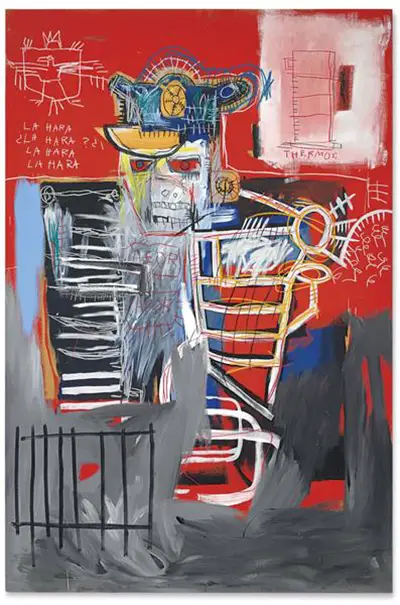The painting is around 180cm in height, and 120cm in width, making it a large painting but not unusually so for this artist. Basquiat regularly delivered large canvases which could easily be described as murals, and this was in keeping with his own artistic style that was better suited to bright colour and a boldness in style and sizing. One cannot recall many successful graffiti artists who work on small canvases, as the impact would simply not be effective. As a sign of the progress of this artist's oevure, even after his sad passing, La Hara was sold in the late 1980s for several hundred thousands of dollars, which would equate to just a single percent of its later valuation. Abstract Expressionists have commanded huge prices at auction over the past few decades and Basquiat is one of the most famous of those, so this should not really come as much of a surprise to experts in the auctioneer industry.
The early 1980s were a key moment in the career of Basquiat when he really became a household name. His reputation would now spread outside of the art world, in the mainstream and this was a major achievement for someone of his background, from which he could not enjoy the assistance that most other artists would have received. Valuers have explained that this period in his career covers the most valuable output, of all that he produced and so La Hara would have been in great demand when it came up for sale again in recent years. With La Hara we find a white person depicted as a skeleton with a menacing presence. Normally the artist would not produce portraits of white people, but might refer to them through lettering within other paintings.
The reference is believed to have been to a police officer, and Basquiat would regularly speak out against the organisation which he felt was responsible for oppressing his own community, particularly within New York. His title for this piece is a strange fusion of Irish surnames, relating to the police, and also his own Puerto-Rican culture which together produced the term La Hara, which no-one would have been able to work out without the later explanation by the artist. One can, however, make some visual connections by comparing this artwork with themes used in some of his other paintings.


